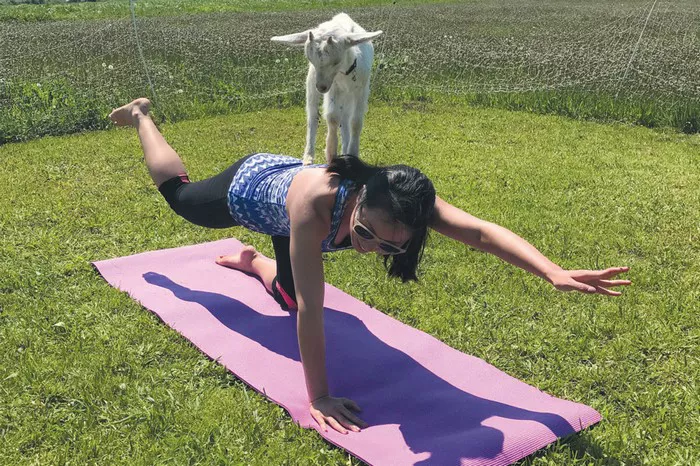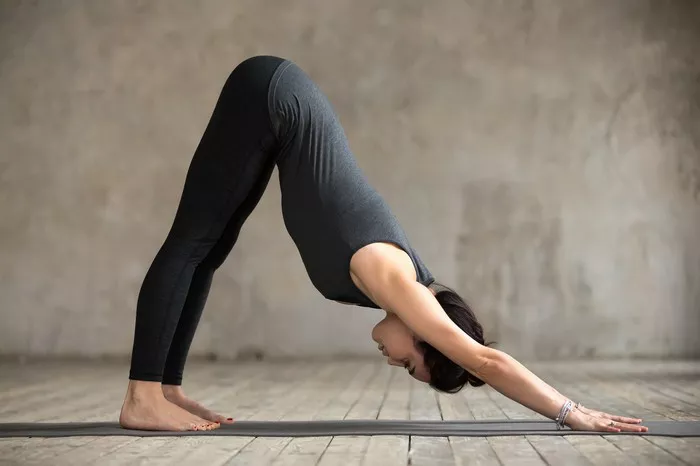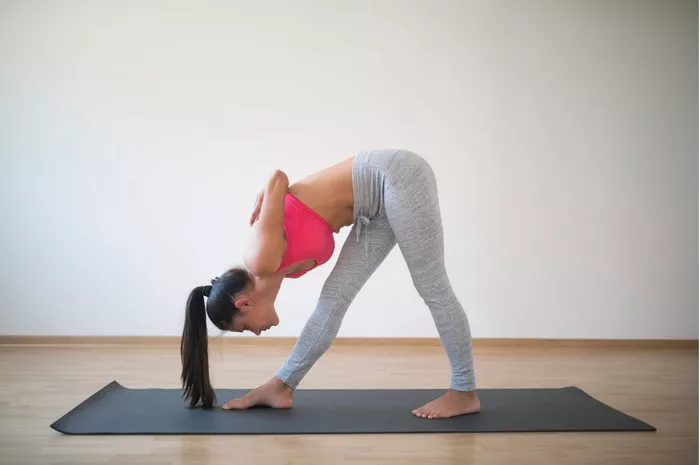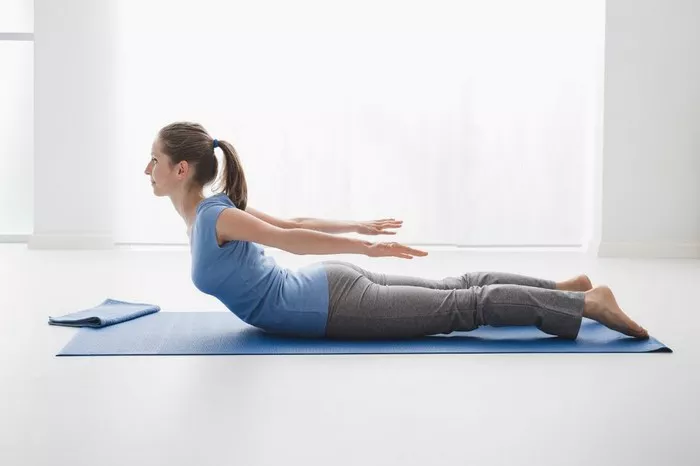Yoga is a practice that combines physical postures, breathing techniques, and meditation, with the goal of enhancing both the body and mind. Among the many poses, the Navasana, or Boat Pose, stands out due to its ability to strengthen the core, improve balance, and enhance overall body awareness. In this article, we will delve into the various benefits of Boat Pose, its alignment principles, and how to practice it effectively, whether you’re a beginner or an experienced practitioner.
Introduction to the Boat Pose
The Boat Pose (Navasana) is a seated posture that requires balance, strength, and focus. In this pose, the practitioner sits with the legs lifted off the ground and the body forming a V-shape, resembling a boat. The arms extend forward or alongside the body, helping to support balance and posture. The posture challenges both the physical body and the mind, encouraging mindfulness, patience, and determination.
Navasana is a common pose in yoga sequences and can be practiced in various ways to increase intensity or make it more accessible. It’s beneficial for practitioners of all levels, from beginners seeking to improve core strength to advanced practitioners looking to deepen their practice.
The Mechanics of Boat Pose
To begin practicing Navasana, follow these steps:
Start seated on your yoga mat with your legs extended straight in front of you.
Engage your core by drawing the navel in toward the spine, and straighten your back.
Lean back slightly while keeping the spine long, but avoid rounding your back. Keep your chest open.
Lift your legs off the floor. The knees can be bent if you’re a beginner. For a deeper stretch, straighten the legs, so they form a 45-degree angle to the floor.
Extend your arms parallel to the floor with the palms facing inward. Alternatively, place your hands on your legs to help maintain balance.
Hold the position for a set amount of time, usually around 20-30 seconds, then slowly release and lower the body back to the floor.
While the pose may seem simple at first glance, maintaining balance and engaging the right muscles are essential to maximize the benefits. It’s also important to remember that the Boat Pose can be modified to suit various abilities. For example, a beginner might perform a version with bent knees or a prop under the hands for extra support.
Physical Benefits of the Boat Pose
The Boat Pose offers numerous physical benefits, particularly for strengthening the core and improving overall stability and posture. Let’s explore the specific ways it can positively impact your body:
1. Core Strengthening
The primary benefit of the Boat Pose is its ability to strengthen the core muscles, which include the abdominal muscles, obliques, and lower back muscles. In this pose, you engage the core to maintain balance, which helps to build both endurance and strength in the abdominal region.
Rectus Abdominis: The rectus abdominis, or “six-pack” muscles, are worked significantly in this pose. As you lift your legs and lean back slightly, the rectus abdominis contracts to maintain the position, leading to toning and strengthening.
Obliques: The oblique muscles (the muscles on the sides of your torso) are also activated as you stabilize your body. These muscles help you twist or rotate the torso, providing essential support for your movements.
Transverse Abdominis: The deep core muscles, such as the transverse abdominis, are engaged to provide stability. Strengthening these muscles can help improve posture and reduce the risk of back pain.
A strong core is crucial for supporting the spine, improving balance, and maintaining proper alignment in other poses and daily activities.
2. Improved Balance
Boat Pose challenges your sense of balance. As you lift your legs and hold your torso in the V-shape, your body must work to remain stable, which strengthens the balance muscles throughout the body. This includes the smaller stabilizer muscles in the hips, pelvis, and lower back.
Improved balance is important not only for yoga but also for daily activities like walking, climbing stairs, or even standing. In addition, enhanced balance can prevent falls and injuries, particularly as we age.
3. Increased Flexibility
While the Boat Pose is predominantly a strengthening posture, it also helps improve flexibility in several areas of the body. By lifting your legs and holding them in a static position, you stretch the hip flexors, hamstrings, and calves. With regular practice, these muscles become more flexible, which can reduce the risk of tightness or injury.
The flexibility gained in the lower body also supports better mobility and range of motion, contributing to overall body function and ease of movement.
4. Posture Enhancement
The Boat Pose helps improve posture by engaging the back muscles and lengthening the spine. A strong core supports the spine, promoting an upright, natural posture both in and out of yoga practice. Maintaining good posture can prevent slouching and reduce the risk of developing musculoskeletal issues.
By training the body to sit upright with strength and stability, the Boat Pose contributes to better spinal health and a more aligned posture throughout daily activities.
5. Spinal Health
The act of engaging the core muscles and lifting the legs places gentle compression on the spine, which can increase the circulation of fluid in the intervertebral discs. This encourages spinal health and may alleviate some forms of lower back pain by strengthening the surrounding muscles.
Regular practice of Navasana helps prevent spinal stiffness and supports the long-term health of the back.
Mental and Emotional Benefits
While the physical benefits of Boat Pose are clear, the mental and emotional benefits should not be overlooked. Yoga is known for its ability to improve mental clarity, reduce stress, and promote mindfulness, and Boat Pose is no exception. Here are some ways it can help improve your mental state:
1. Improved Focus and Concentration
The Boat Pose requires you to maintain focus and concentration to hold the position. Since the posture can be challenging, it encourages the practitioner to stay present and tune out distractions. This heightened focus in the pose can transfer to other areas of life, helping you remain more attentive in daily tasks.
Focusing on your breath and the body alignment during the pose teaches mental discipline, which enhances your ability to focus and concentrate in other situations.
2. Mental Strength and Resilience
Holding the Boat Pose, especially for extended periods, can be uncomfortable. However, by practicing patience and determination, you build mental strength and resilience. This is an essential quality that can help you handle challenges both in yoga and in life. The ability to endure discomfort while maintaining composure is a key element of yoga practice.
3. Stress Reduction
Yoga, in general, is a powerful tool for stress reduction, and the Boat Pose is no different. Holding the posture while focusing on deep, even breaths helps activate the parasympathetic nervous system, the part of the body responsible for relaxation. This reduces the production of stress hormones like cortisol, helping to calm the mind and alleviate tension.
4. Emotional Balance
Boat Pose can also promote emotional balance. As the practitioner engages the core and focuses inward, there is an opportunity to let go of distractions, external worries, and emotional stress. This can create a sense of inner calm and emotional clarity, which supports overall well-being.
Modifications and Variations of Boat Pose
While Navasana may be accessible to many, it can be challenging for beginners, especially those who are not accustomed to engaging the core muscles. Here are some variations and modifications to suit different levels:
1. Bent-Knee Boat Pose
For beginners, it’s helpful to keep the knees bent while performing the pose. This reduces the strain on the lower back and allows you to focus on engaging the core muscles without compromising form.
2. Half Boat Pose
If you’re working on your core strength, you can practice a modified version where your legs are lifted at a lower angle (about 30 degrees). This decreases the intensity of the pose and makes it more accessible while still offering a challenging workout.
3. Boat Pose with Props
Using props, such as blocks or straps, can provide additional support in the Boat Pose. For instance, placing a block between the thighs or using a strap to gently assist with balancing can help the practitioner find proper alignment while reducing strain.
4. Dynamic Boat Pose
For more advanced practitioners, the Boat Pose can be made dynamic by incorporating movements. For example, you can alternate between lifting your legs higher and lowering them, or adding twists to the torso to engage the obliques more deeply.
5. Supported Boat Pose
For those with limited core strength or flexibility, a supported Boat Pose can be practiced by holding onto a sturdy object or a partner for additional support while lifting the legs.
Conclusion
In conclusion, the Boat Pose (Navasana) is a powerful and beneficial yoga posture that helps strengthen the core, improve balance, and enhance flexibility. It also offers valuable mental benefits, promoting focus, concentration, and emotional balance. Regular practice of Boat Pose can lead to improved posture, spinal health, and overall physical resilience.
Whether you’re a beginner or an experienced practitioner, the Boat Pose can be modified to meet your needs, and with consistent practice, you can expect to see improvements in both your physical strength and mental clarity. As you continue to practice this pose, remember to focus on alignment, breathing, and staying present in the moment, as this is where the true benefits of yoga unfold.
By incorporating Navasana into your yoga routine, you will not only work on physical strength but also develop mental resilience, creating a more balanced, focused, and healthy mind and body.
Related topics
























